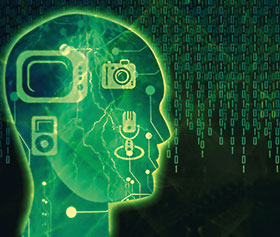

The business need for more automated and efficient operations has led end users in industrial plants to accumulate large and increasingly complex collections of operations-related information technology (IT) solutions. Each solution in itself can represent a combination of custom-configured software and hardware products.
As with the plant’s physical assets, these collections of IT solutions, plus any associated custom intellectual property, can represent a significant investment in time, money, and effort.
Operations and engineering organisations are accountable for these solutions and have specific responsibilities that cannot easily be delegated to the corporate IT group or external IT providers. The size and complexity of many collections require a portfolio-based approach to meet all associated challenges.
Operations IT solutions
Owner-operators face the constant need to improve operational effectiveness and efficiency to remain competitive. Changing business needs and expectations must be addressed with a flexible and evolving business strategy, which in turn requires integrating business processes with manufacturing and engineering operations. This leads to a gradual evolution of large and more complex collections of IT solutions to support these business processes. These collections may include solutions from a variety of suppliers and employ a broad range of information and communications technologies.
Solutions are created and implemented to solve specific business problems. As a result they must be consistent with current or planned business processes. The requirements and constraints of these processes provide the most significant drivers. Increased business efficiency and effectiveness require increased integration between solutions, often crossing traditional business process boundaries.
Solution management
Effectively managing large collections of solutions is a challenge not only because of the number of solutions but also because individual solutions are subject to rapid changes and improvements to the underlying systems and technology. In some cases, the business processes themselves may also change. Failure to manage these solutions increases susceptibility to security threats and exposes the organisation to a higher probability of complex failures.
While there are cases where the collection of solutions are from either a single source or supplier and/or built on a common architecture, it is much more common to have a collection of solutions from multiple sources. This requires acquiring and maintaining interfaces and other means of integration. It also means that decisions made with respect to one solution may impact others.
Effective management requires dedicated and skilled resources, not only in the IT function but also within the affected business processes. IT groups can support individual products, technologies and systems, but integrating and interconnecting these systems requires detailed knowledge of the business processes.
Responding to this combination of technical and process complexity can quickly become very resource intensive. Failure to meet the management requirements by taking steps such as freezing system versions or dropping support agreements can provide short-term relief, but eventually a price has to be paid.
A portfolio approach
Responding to the above challenges and complexities begins by adopting a 'portfolio approach' to solutions management.
The first step is to define the scope of the portfolio(s) to be managed. This scope can be expressed in any of several ways. In some situations, it may be possible to define the scope as including all solutions provided by a specific supplier. This is often not possible when dealing with collections of operations IT solutions, since they may be acquired from a variety of suppliers, supplemented by internally developed solutions or components. In these situations it is more effective to define the scope in terms of the affected business processes. Examples include production or maintenance operations management. These and similar processes are described in the ISA95 series of standards.
With the functional scope defined, it is essential to define accountability for each specific portfolio. Operations and engineering organisations within user companies are accountable for operations IT solutions and have specific responsibilities that cannot easily be delegated.
The next step is to identify all portfolio components. Each of these is in turn described or classified using attributes such as source, life cycle position, and degree of customisation or additional integration required. Understanding the degree of integration is necessary to identify cases where changes to one solution may have secondary effects on others in the portfolio.
Effective solutions management also requires a solid understanding of the life cycle concept. This concept can be applied from any of several perspectives (acquisition, development, implementation, support, etc.) as a basis for making decisions.
It is also important to understand the life cycle position of solutions with respect to development. Solutions that may have only recently become available can be expected to have frequent updates to add new functions or address problems. More mature solutions may change less frequently and obsolete functions may have no updates or improvements planned or available. Each of these situations presents specific challenges. Solutions that have been widely deployed generally present fewer problems because of this experience.
Tie to strategy
It is critical to maintain a clear tie to business strategy. While forces such as technology changes or new versions of specific solutions may drive specific changes to the portfolio, the full implications for the strategy and associated business processes must be understood before such changes are implemented.

Eric Cosman, a senior consultant at ARC Advisory Group, has over 35 years of experience developing and supporting operations information technology solutions in the process industries. During his career, his assignments and responsibilities have included process automation systems development, communications network design, functional and technical architecture design, and technology lifecycle management.
For more information contact Paul Miller, ARC Advisory Group, +1 781 471 1141, [email protected], www.arcweb.com

© Technews Publishing (Pty) Ltd | All Rights Reserved